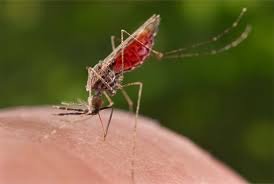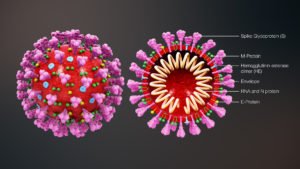Zika virus is a mosquito-borne flavivirus that was first identified in Uganda in 1947 in monkeys. It was later identified in humans in 1952 in Uganda and the United Republic of Tanzania.
Outbreaks of Zika virus disease have been recorded in Africa, the Americas, Asia and the Pacific. From the 1960s to 1980s, rare sporadic cases of human infections were found across Africa and Asia, typically accompanied by mild illness.
The first recorded outbreak of Zika virus disease was reported from the Island of Yap (Federated States of Micronesia) in 2007. This was followed by a large outbreak of Zika virus infection in French Polynesia in 2013 and other countries and territories in the Pacific. In March 2015, Brazil reported a large outbreak of rash illness, soon identified as Zika virus infection, and in July 2015, found to be associated with Guillain-Barré syndrome.
In October 2015, Brazil reported an association between Zika virus infection and microcephaly. Outbreaks and evidence of transmission soon appeared throughout the Americas, Africa, and other regions of the world. To date, a total of 86 countries and territories have reported evidence of mosquito-transmitted Zika infection.
Signs and symptoms
The incubation period (the time from exposure to symptoms) of Zika virus disease is estimated to be 3–14 days. The majority of people infected with Zika virus do not develop symptoms. Symptoms are generally mild including fever, rash, conjunctivitis, muscle and joint pain, malaise, and headache, and usually last for 2–7 days.
Complications of Zika virus disease
Zika virus infection during pregnancy is a cause of microcephaly and other congenital abnormalities in the developing fetus and newborn. Zika infection in pregnancy also results in pregnancy complications such as fetal loss, stillbirth, and preterm birth.
Zika virus infection is also a trigger of Guillain-Barré syndrome, neuropathy and myelitis, particularly in adults and older children.
Research is ongoing to investigate the effects of Zika virus infection on pregnancy outcomes, strategies for prevention and control, and effects of infection on other neurological disorders in children and adults.
Transmission
Zika virus is primarily transmitted by the bite of an infected mosquito from the Aedes genus, mainly Aedes aegypti, in tropical and subtropical regions. Aedes mosquitoes usually bite during the day, peaking during early morning and late afternoon/evening. This is the same mosquito that transmits dengue, chikungunya and yellow fever.
Zika virus is also transmitted from mother to fetus during pregnancy, through sexual contact, transfusion of blood and blood products, and organ transplantation.
Diagnosis
Infection with the Zika virus may be suspected based on symptoms of persons living in or visiting areas with Zika virus transmission and/or Aedes mosquito vectors. A diagnosis of Zika virus infection can only be confirmed by laboratory tests of blood or other body fluids, such as urine or semen.
Treatment
There is no treatment available for Zika virus infection or its associated diseases.
Symptoms of Zika virus infection are usually mild. People with symptoms such as fever, rash, or arthralgia should get plenty of rest, drink fluids, and treat pain and fever with common medicines. If symptoms worsen, they should seek medical care and advice.
Pregnant women living in areas with Zika transmission or who develop symptoms of Zika virus infection should seek medical attention for laboratory testing and other clinical care.
Prevention
Mosquito bites
Protection against mosquito bites during the day and early evening is a key measure to prevent Zika virus infection. Special attention should be given to prevention of mosquito bites among pregnant women, women of reproductive age, and young children.
Personal protection measures include wearing clothing (preferably light-coloured) that covers as much of the body as possible; using physical barriers such as window screens and closed doors and windows; and applying insect repellent to skin or clothing that contains DEET, IR3535 or icaridin according to the product label instructions.
Young children and pregnant women should sleep under mosquito nets if sleeping during the day or early evening. Travellers and those living in affected areas should take the same basic precautions described above to protect themselves from mosquito bites.
Aedes mosquitoes breed in small collections of water around homes, schools, and work sites. It is important to eliminate these mosquito breeding sites, including: covering water storage containers, removing standing water in flower pots, and cleaning up trash and used tires. Community initiatives are essential to support local government and public health programs to reduce mosquito breeding sites. Health authorities may also advise use of larvicides and insecticides to reduce mosquito populations and disease spread.
No vaccine is yet available for the prevention or treatment of Zika virus infection. Development of a Zika vaccine remains an active area of research.
Transmission in pregnancy
Zika virus can be transmitted from mother to fetus during pregnancy, resulting in microcephaly (smaller than normal head size) and other congenital malformations in the infant, collectively referred to as congenital Zika syndrome.
Microcephaly is caused by underlying abnormal brain development or loss of brain tissue. Child outcomes vary according to the extent of the brain damage.
Congenital Zika syndrome includes other malformations including limb contractures, high muscle tone, eye abnormalities, and hearing loss. The risk of congenital malformations following infection in pregnancy remains unknown; an estimated 5–15% of infants born to women infected with Zika virus during pregnancy have evidence of Zika-related complications. Congenital malformations occur following both symptomatic and asymptomatic infection.
Sexual transmission
Zika virus can be transmitted through sexual intercourse. This is of concern due to an association between Zika virus infection and adverse pregnancy and fetal outcomes.
For regions with active transmission of Zika virus, all people with Zika virus infection and their sexual partners (particularly pregnant women) should receive information about the risks of sexual transmission of Zika virus.
WHO recommends that sexually active men and women be correctly counselled and offered a full range of contraceptive methods to be able to make an informed choice about whether and when to become pregnant in order to prevent possible adverse pregnancy and fetal outcomes.
Women who have had unprotected sex and do not wish to become pregnant due to concerns about Zika virus infection should have ready access to emergency contraceptive services and counselling. Pregnant women should practice safer sex (including correct and consistent use of condoms) or abstain from sexual activity for at least the entire duration of pregnancy.
For regions with no active transmission of Zika virus, WHO recommends practicing safer sex or abstinence for a period of six months for men and two months for women who are returning from areas of active Zika virus transmission to prevent infection of their sex partners. Sexual partners of pregnant women, living in or returning from areas where local transmission of Zika virus occurs, should practice safer sex or abstain from sexual activity throughout pregnancy.
![]()




